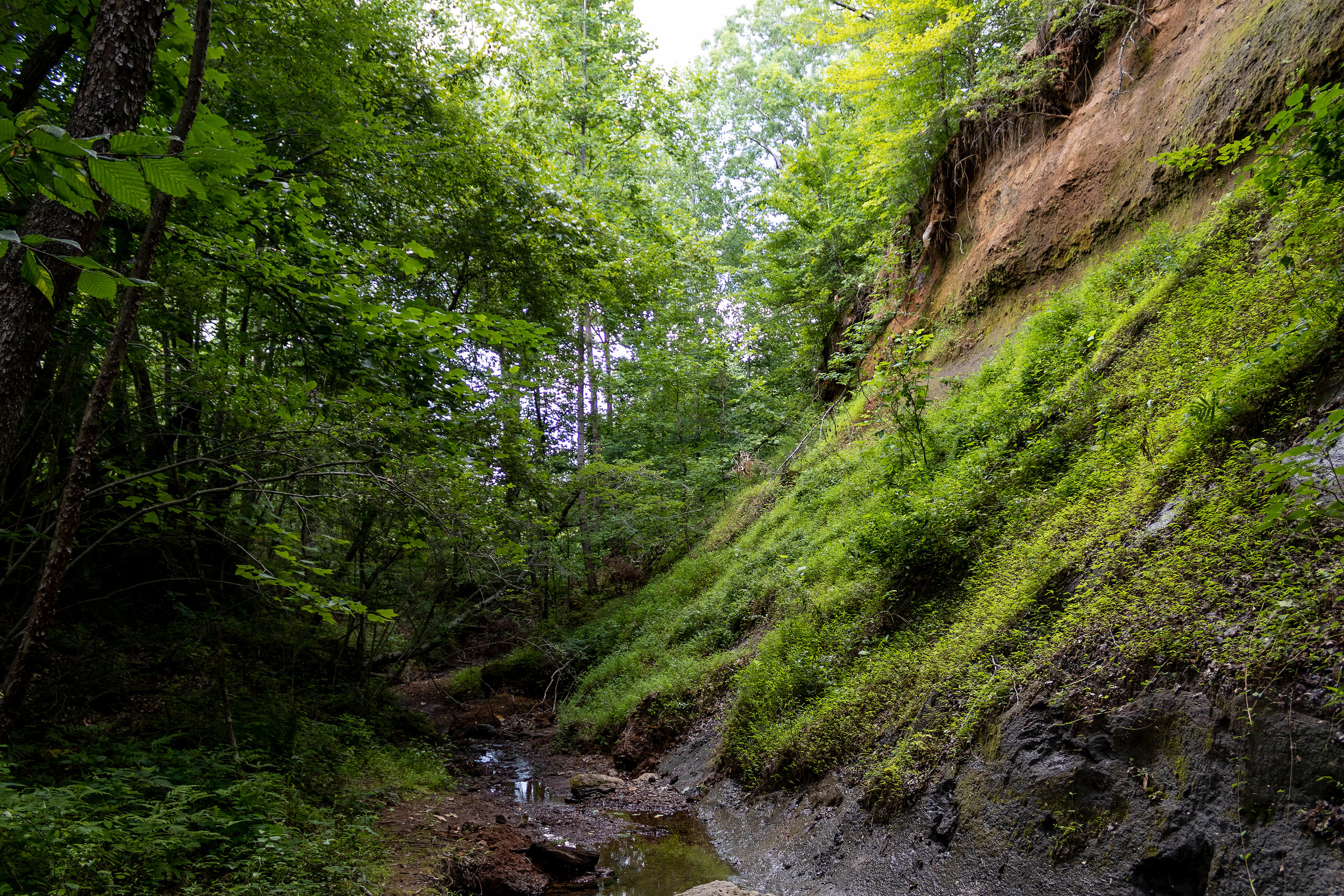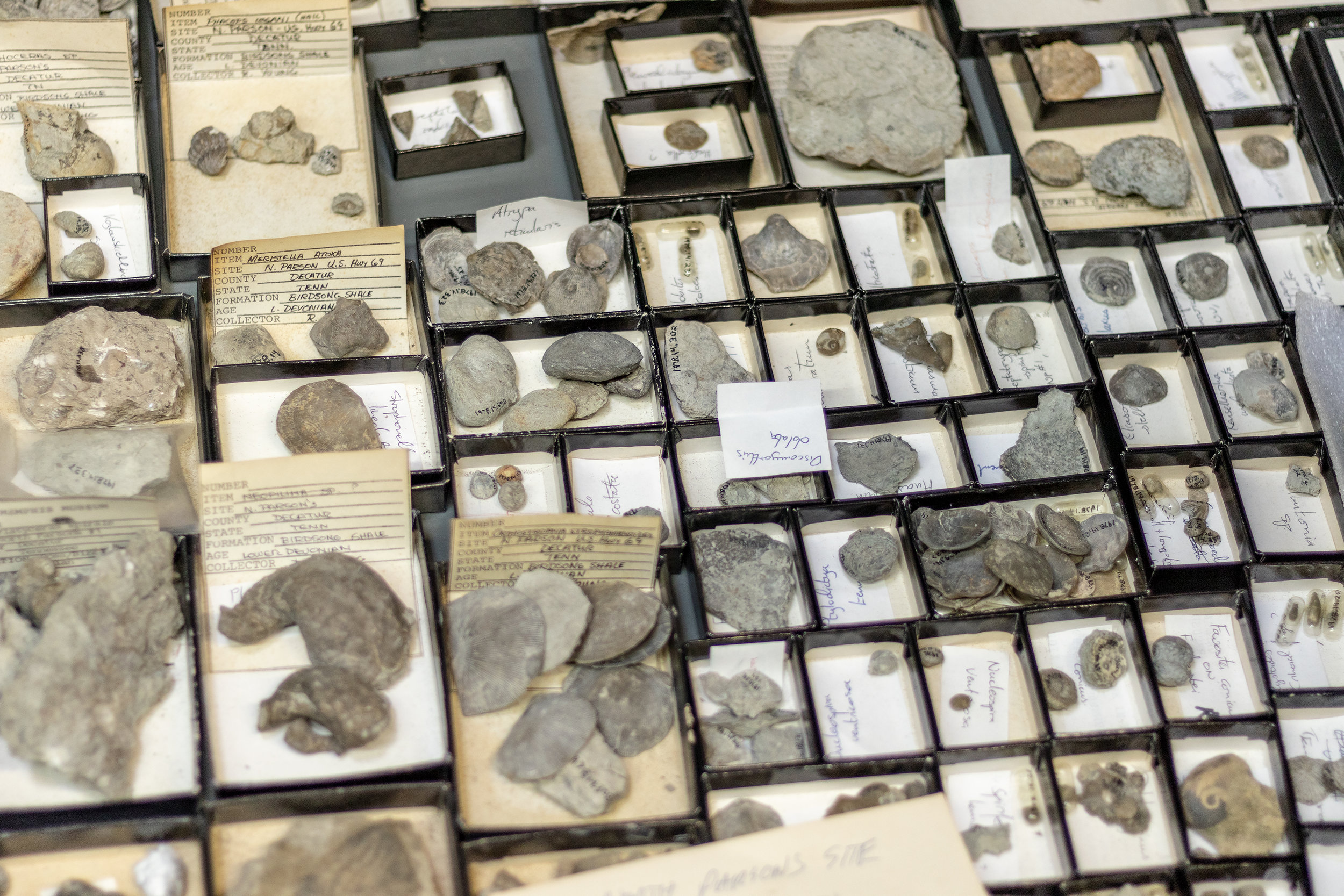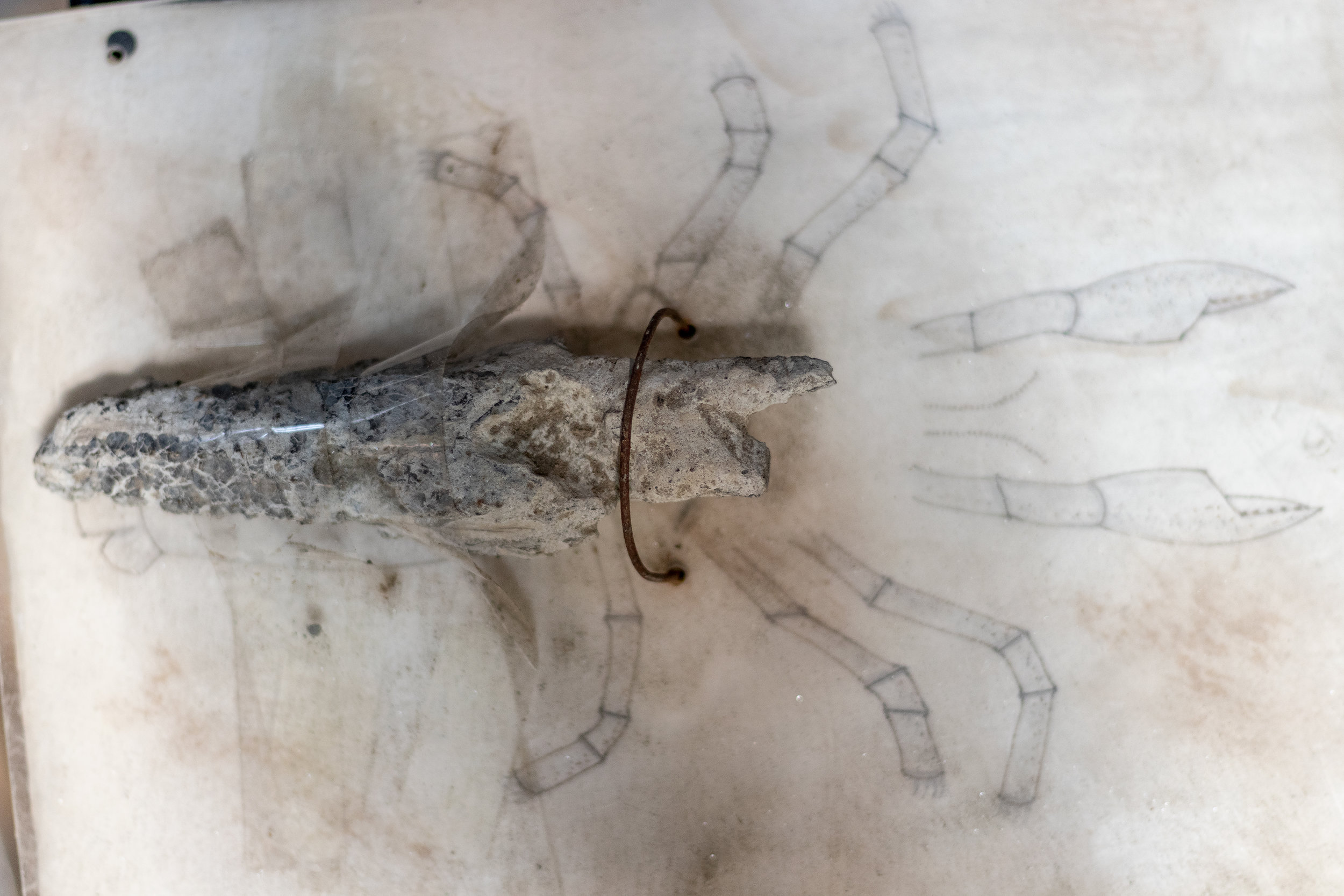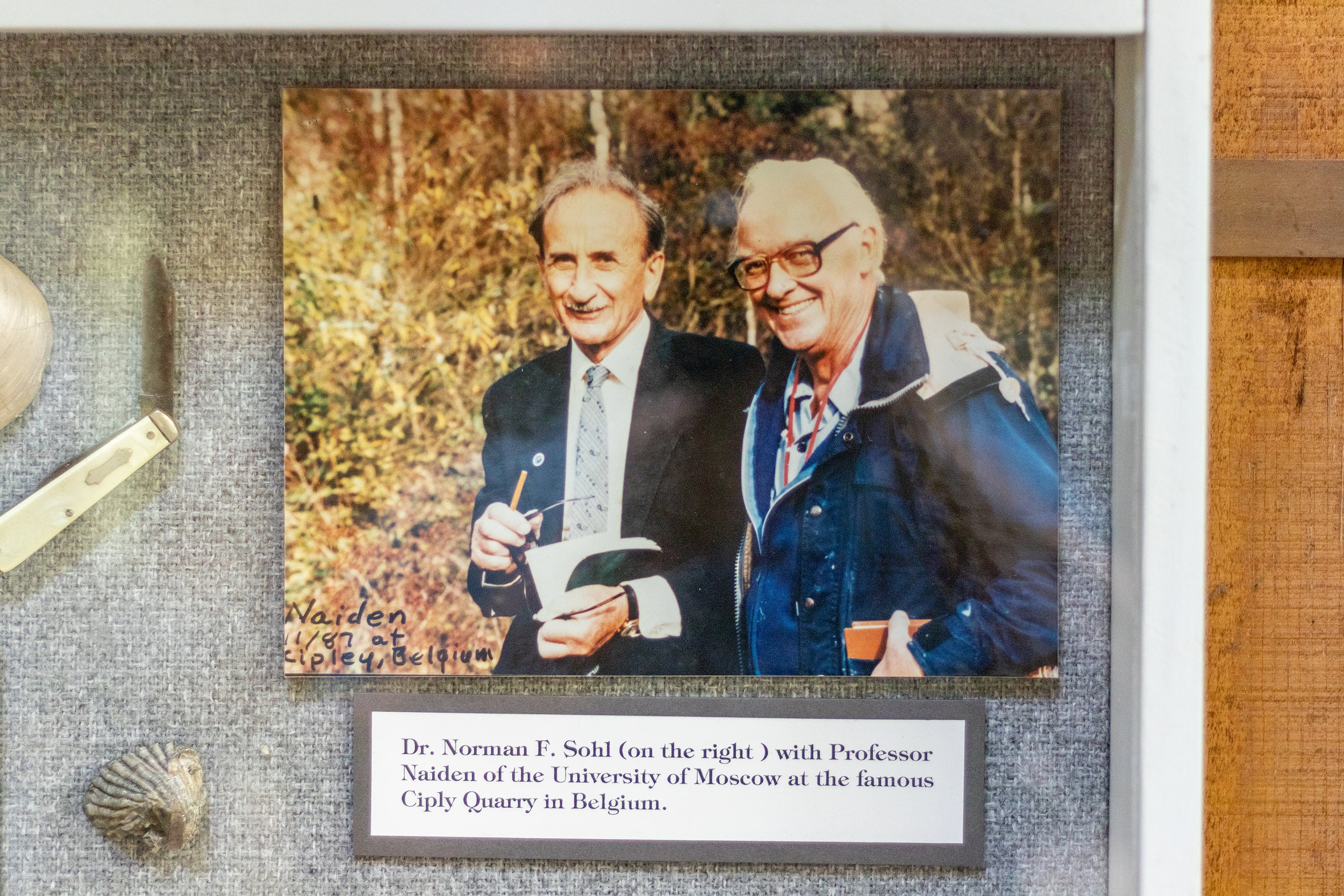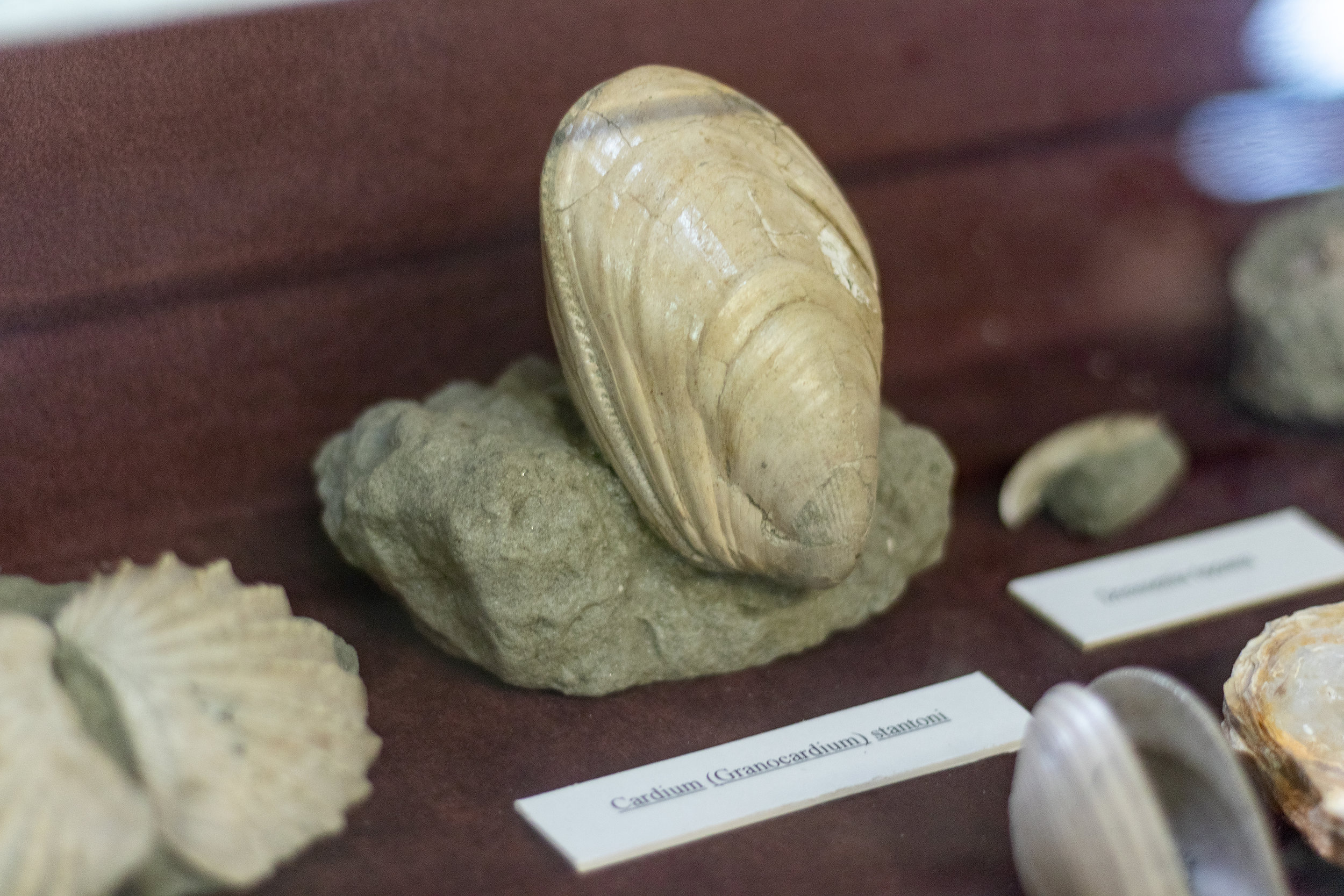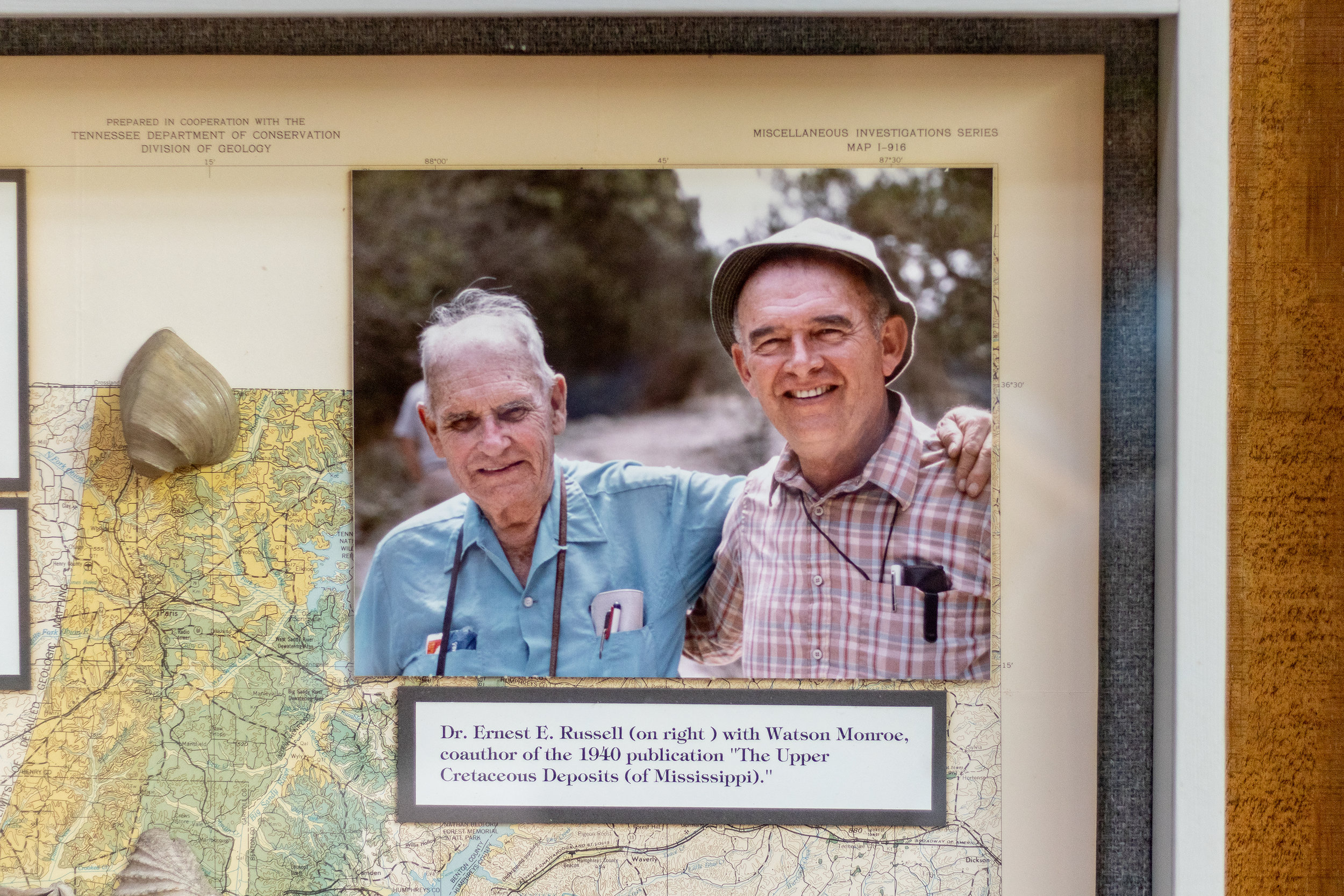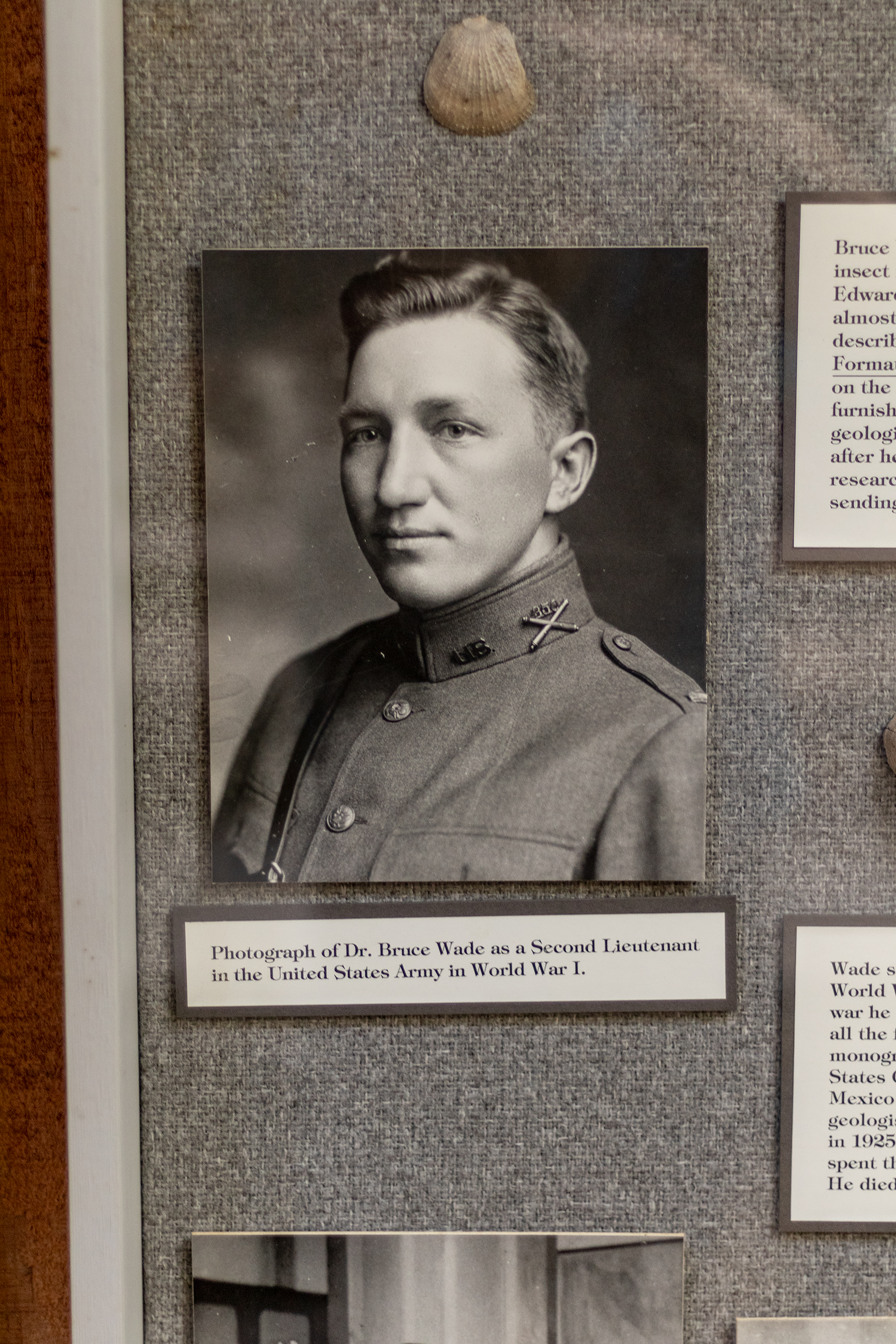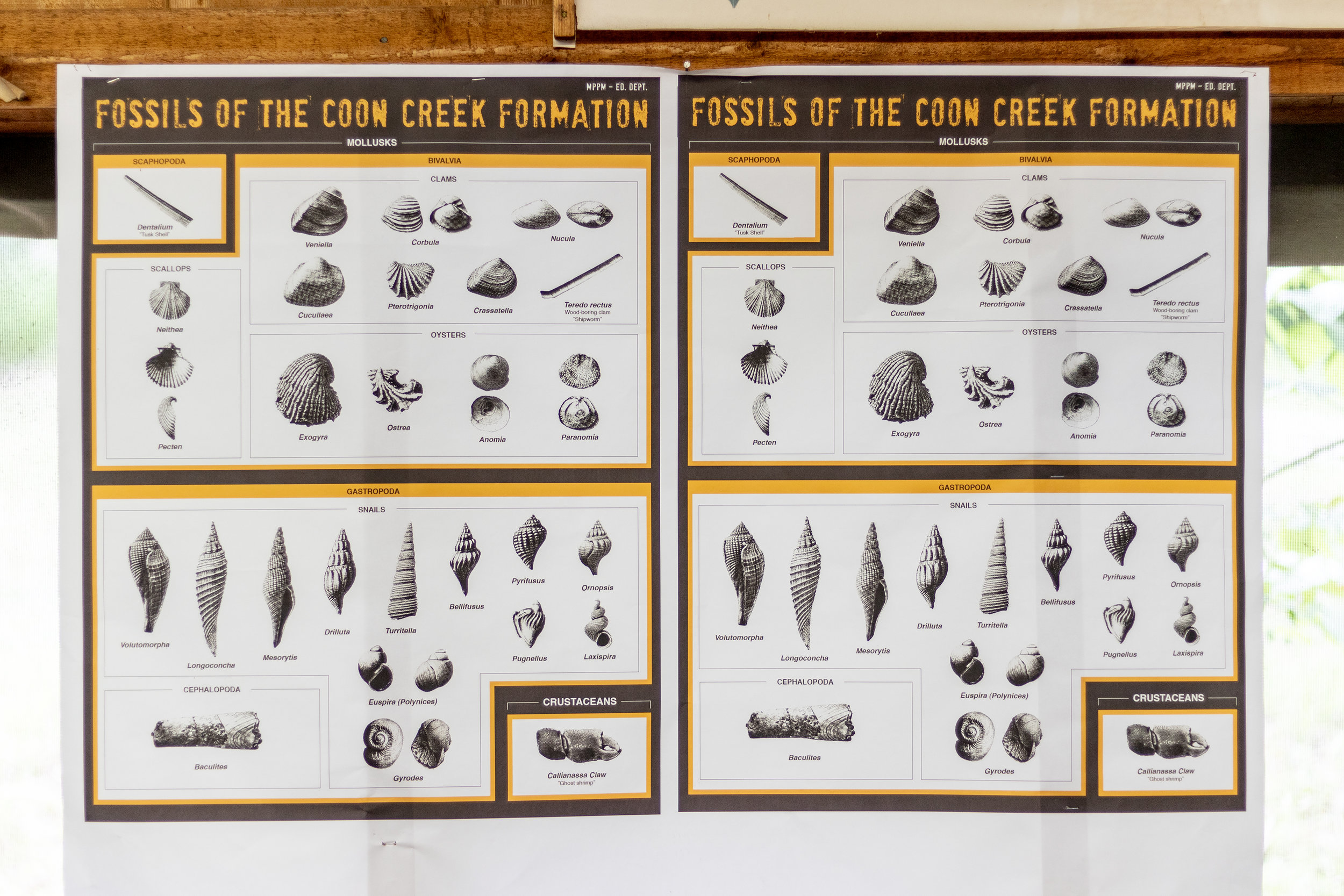The Lagerstätte to End All Motherlodes
Many years ago, West Tennessee was underwater and a part of what eventually will become the Gulf of Mexico. Most of North America was covered by a shallow ocean that connected the present-day Arctic Ocean and the Gulf of Mexico. The water receded leaving the shorelines of today. Our ocean was teeming with life; from small micro-organisms to larger bivalves such as Pterotrigonia (our state fossil and a type of clam) and the much larger mosasaurs and plesiosaurs. We dove into this archaic ocean by heading over to the Coon Creek Science Center in McNairy County and speaking with Dr. Michael Gibson, a geology professor at the University of Tennessee at Martin. He studies the Earth by examining minerals, rocks, sediments, and fossils. The latter led him to Coon Creek.
Coon Creek is a result of a family farm cultivated there in the late 1800s. When the Weeks family were farming the land, what we call Coon Creek today was a small drainage ditch. Dr. Gibson explained that “humans played a role,” in creating much of the West Tennessee landscape. “Back then, they opened up the landscape for farming,” this means that trees were cut down, land was leveled for crops, and drainage routes were created. This also “means erosion rate picked up and the Weeks’ drainage site grew intensely in size; it became very deep, very quickly,” resulting in Coon Creek as we know it.
The 240-acres of Coon Creek Science Center is part of a much larger formation. A formation consists of a certain type of rocks in a layer of Earth. The Coon Creek Formation is in “a belt that kind of runs north to south in Tennessee,” and also goes into northeastern Mississippi. Dr. Gibson gave us some history concerning the site. “The first Coon Creek material ever found goes back to, actually, the 1830s. It wasn't this actual site, but, periodically through the years, after that, people found it.” It wasn't until after the turn of the century, in the early 1900s, did it gain notoriety. “There was a fellow by the name of Bruce Wade, from Trenton, and he was looking for a dissertation topic to do. A lot of fossils had been collected earlier and found their way east to Nashville. So a paleontologist at Johns Hopkins suggested that Bruce Wade come back home and do this as his dissertation. Bruce Wade was a Vanderbilt undergraduate of geology back in the early 1900s, and he did come back. And again, basically, at that point, this site becomes known to all the practicing geologists in the country, but then it started to pick up an international reputation as well. And it's been studied pretty consistently since then.” An exhibit about Bruce Wade, including many fossils, is available at the Hardin County Museum in Savannah, Tennessee.
Coon Creek actually contains a type section of rock which is pretty important in Geology. Dr. Gibson explained that “in geology, geologists really love the rock layers, right? So we literally named them, and we pick a spot. And this is like the reference point for everything. So everybody has to compare everything to that site. Coon Creek is it for this formation, it’s this site here. And so the people that lived here over the years have been really good about preserving it and conserving it and allowing people to come in and do the research.”
What sets the Coon Creek Formation apart is the sheer amount of materials in it. All of the fossils present means it “has an elevated status among fossil sites.” This status is referred “to as a lagerstätte which is German and means motherlode. There are only about fifteen in the US that were elevated to this status. That’s because their preservation is so good, the amount of material, and the ease of getting at it “is what makes these sites so important when it comes to fossils in Geology.” Coon Creek exhibits excellent preservation and diversity in the fossils present. Dr. Gibson told us, “Even the fecal material is still here! Not that everybody wants to play with that part.”
The astounding part of the Coon Creek Science Center is that they’ve found the fossils and fossil fragments of five different marine reptiles. Gibson explained that “This sites produced parts of at least five. Parts of two separate skulls have been found, just in this 240 acre. Because this is the bottom, it's like being on the bottom in the middle of the Gulf of Mexico. You know how big that would be right? In the same couple hundred acres—this property—at least five animals that breathe air, that may have to go to the surface to gulp air: die, hit the seafloor at the same spot, at the same time. There's a good story there, right?” That’s the Coon Creek Science Center’s purpose: to figure out what may have happened to those five large aquatic reptiles. There have only been five identified… there may be more under the ground in and around McNairy County.
As of today, 71% of the world is covered in water and only 10% of that has been explored! Think about what it must have been like when most of the world was covered! Thanks to the work of Geologists and Paleontologists, we are able to discover the organisms of these ancient oceans. Coon Creek holds aquatic fossils such as, “plesiosaurs, not dinosaurs, but their swimming counterparts.” Dr. Lionel Crews, an Astronomy Professor from UT Martin, assists Dr. Gibson, described the fossil extraction method to us. He explained what some of the students at the site were doing while we were visiting. He pointed toward the fossils in the student's hands and explained that “they dig that sort of grayish stuff right out of the wall,” of Coon Creek. “You try to actually dig a big chunk. Then what you do is take essentially a dental pick, they have specialized ones, and you pick out a little of the matrix, that's the grayish dirt. You pick out a little bit of it, then you squirt it with water to sort of clean it off, and eventually expose the fossil. So between the dental pick picking the dirt out, and then you can use a toothbrush actually, to then clean off the top of the shell. And then you just basically split spray for wax over it to preserve it.”
While at the science center, there was a group of students from Greenfield High School. Chemistry teacher Robert McCall brought the members of the Greenfield Research Club to see if they wanted to do their project on the Coon Creek Science Center for the Tennessee Junior Academy of Science’s competition. Maya Rash explained, “We're trying to see, like, what line of research we want to do. We have it between this or studying cancer cells.” Though “slippery,” as the group of five described it, they were able to collect information to see if they want to enter the competition using what they’ll find at Coon Creek. McCall explained a little more, “either individuals or groups do the research and they present and publish a standard abstract or a couple of standard abstracts… they would all end up graduating from high school with publications” on their resumes. The students recently made their decision and are going to do their project at Coon Creek starting July 29th!
If you’re interested in getting to learn more about Coon Creek and fossils, participating, or volunteering at the science center please call Director and Geologist Allen Youngerman with the UT Martin Selmar Center at (731) 646-1636.
At the time of publication, the Pink Palace Family of Museums owns the center and it is closed to the public. According to their website and their representative Vicky Goodrum, “Once a year the Pink Palace invites (Museum Members) to dig it at our Coon Creek Science Center. Members get to spend a day digging for 70 million-year-old fossils at one of the top fossil deposits of the world!” They do offer field trips for schools and more information can be found at https://www.memphismuseums.org/coon-creek-science-center/programs/education-programs-at-coon-creek-science-center/ or on their Facebook page: Coon Creek Science Center.







